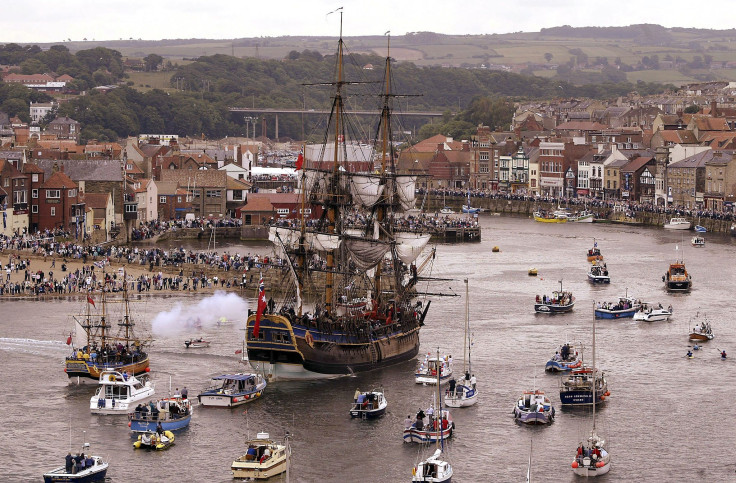HMS Endeavour Wreckage 'Found' After 25-Year Search, Excavation Likely In 2019

The resting place of HMS Endeavour, the ship James Cook commanded to Australia on his first voyage of discovery, is believed to have been found after an extensive 25-year search. The breakthrough will be officially announced Friday.
Marine archaeologists hope the wreckage of the vessel will most likely be excavated next year, in time for the 250th anniversary of Cook's arrival in Australia. The vessel is historically significant to many countries, including the United States, Britain, New Zealand and Australia.
For more than two decades, the search for the historic ship underwent off Newport, Rhode Island, on the northeastern coast of the U.S. During this time, marine archaeologists narrowed down the search for the vessel from a fleet of 13 vessels to five. They have now pinpointed one extremely promising site in Newport Harbour, just off Goat Island -- a small island in the Narragansett Bay.
According to the Sydney Morning Herald, archaeologists from the Australian National Maritime Museum and the Rhode Island Marine Archaeology Project will release a detailed 3D image of the site where the ship is believed to be located.
"We can say we think we know which one it is. It is exciting, we are closing in," Kathy Abbass, director of the Rhode Island Marine Archaeology Project, told Fairfax Media. "This is a vessel that is significant to people around the world, including Australia."
The Endeavour, which was purchased by the British Navy in 1768 for a scientific mission to the Pacific Ocean, has been under water for over 200 years. HMS Endeavour carried Captain Cook on his historic voyage to Australia. The ship was later sold and renamed the Lord Sandwich, and was used as a troop carrier and prison ship in America's revolutionary war.
Abbass said the identity of the ship, which has been located, will only be definitively proven after its excavation, which will require significant funding. The excavation is likely to spark a battle over where the wreckage should be housed.
“It’s not definitive that this is Endeavour,” the director of the Australian National Maritime Museum, Kevin Sumption, told the Guardian. “We’re carefully gathering very specific samples of timber and we’re going to conduct forensic analysis to see what we have. Most of the ships that were scuttled in Newport in August 1778 were built of American or Indian timbers [but] the Endeavour was built in the north of England of predominantly oak.
“With some good detective work we can sample the timbers of this promising site [and] then we might have evidence that this ship is at least British in origin,” Sumption added.
In recent years, the Australian National Maritime Museum provided grants to help fund the deep-dive and remote sensing studies that have helped narrow the search for the ship.
"Now that RIMAP [Rhode Island Marine Archaeology Project] and the ANMM [Australian National Maritime Museum] have identified a possible site in Newport Harbor that might be the Lord Sandwich ex Endeavour, the detailed work must begin to prove it," Abbass said in a statement posted on the group's website Tuesday. "Therefore, fundraising is ongoing for the artifact management facility needed to process, store, and display the artifacts that will emerge from the planned 2019 excavation."
© Copyright IBTimes 2025. All rights reserved.





















